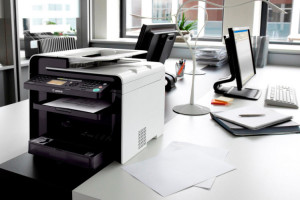7 Easy Ways to Cut Down on Office Print Waste
Posted on June 20th, 2016 in Print Job Monitor | Comments Off on 7 Easy Ways to Cut Down on Office Print Waste
Whether you work at an energetic startup with tight margins or some multinational with Fortune 500 credentials, minimizing the amount of paper your department unnecessarily uses will cut into your costs and free up budget room for other things—like Friday morning donuts, for example.
According to data gathered by the Minnesota Office of Environmental Assistance, American office workers use an average of 10,000 sheets of copy paper annually. The EPA estimates that paper and paperboard make up 40 percent of garbage in the US. And while efforts to promote recycling have made great strides, we still have considerable distance to cover.
#1 – Make recycling easy.
Print is inevitable in any office, and not everything you print is something you will store for later use. Copy paper is easy to recycle, but much of it just doesn’t find a way back into circulation because businesses don’t prioritize making recycling easy for workers.
#2 – Copy on both sides of paper.
Set your printers and copiers to use both sides of the page when printing. Doing so instantly cuts the amount of pages used per print job in half. That’s a huge amount over the course of a year or two!
#3 – Reduce document size to fit onto single page.
If you didn’t try this classic hack during college, you spent far too much valuable pizza money on paper and printing, mi amigo. Reformatting your prints to fit two pages side-by-side on the page cuts the amount of paper you use in half, and if you print front-and-back that’s three sheets of paper saved for every one used.
#4 – Check out the first and last page.
When you print articles from the web, a lot of times the printer isn’t automatically optimized for the page and can include links, headers, et cetera. When your print preview comes up, take a look to see that you aren’t printing something you don’t need. While this may only save a page or two on every other article, over time it will help you minimize the amount of paper waste you are producing right out of the printer. Similarly, articles with extensive comment sections can run several extra pages of print you usually don’t need.
#5 – Lighter weight paper.
Lighter paper requires less wood pulp to produce. That means less material investment going into your paper and less work necessary during the recycling process. Your day to day business needs don’t require heavier paper stock in most cases. In those instances where you need to make an impression with your print quality, you can manually load better paper into the printer. This also helps minimize costs, as lighter weight paper is often less expensive. Bonus!
#6 – Proofread before you print.
Noticing a typo on something you just printed isn’t just frustrating—it’s wasteful. When you preview your print, give each page one final run through to make sure no glaring errors will result in waste.
#7 – Print management software.
Medium-sized and larger offices can benefit greatly by using print monitoring software to help regulate cloud printing and track data, and log printed documents Popular management programs like Print Job Monitor expressly designed to limit the amount of paper waste your company uses.
The most important thing about reducing your waste is being conscious about how you manage the resources you can control. Reducing total costs opens up budgetary space to buy more recycled products, as well as things like biodegradable plastic cutlery for the office kitchen and a whole lot more.
